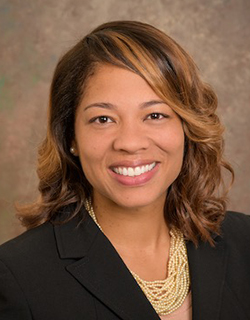Breakout Sessions
Application of Innovative Materials and Technologies
Moderator: Farshad Rajabipour, Penn State
Presentations

Presentation 1: Implementing Wireless Sensors for Smarter Pavement Construction and Performance Monitoring
Speaker: Shihui Shen, Ph.D.
Distinguished Professor, Rail Transportation Engineering
Penn State Altoona
Abstract: This presentation highlights the integration of wireless sensor technologies into pavement engineering to enable smarter construction practices and more effective performance monitoring. Building on a series of CIAMTIS UTC-funded projects, we demonstrate how embedded sensors have been successfully applied to characterize the workability of asphalt mixtures, predict compaction densities, and estimate in-situ modulus for real-time pavement condition assessment. These innovations not only enhance construction quality control but also support long-term infrastructure management by providing data-driven insights into pavement behavior under field conditions. The findings offer a compelling vision for advancing intelligent, resilient, and sustainable transportation infrastructure through sensor-enabled technologies.

Presentation 2: Innovations in Non-Metallic Materials for Resilient and Sustainable Transportation Infrastructure
Speaker: Muhammad Ishfaq
Ph.D. Scholar/Research Assistant
University of Delaware
Abstract: This presentation highlights recent innovations in non-metallic materials aimed at improving the resilience and sustainability of aging transportation infrastructure. It focuses on two key technologies: Carbon Fiber Reinforced Polymers (CFRP) for structural strengthening and self-healing sealants for pavement joints. CFRP systems offer a corrosion-resistant alternative to steel reinforcement, significantly enhancing the service life of reinforced concrete (RC) structures. However, externally bonded CFRP sheets can suffer premature debonding. The use of CFRP U-wraps and fiber anchors improves anchorage and shear resistance, as demonstrated through large-scale RC beam tests showing gains in load capacity and ductility. Durability was assessed by subjecting fiber anchors to harsh environments, including hygrothermal aging, saltwater, alkaline exposure, and freeze–thaw cycles. Results indicated modest interlaminar shear strength losses (~15%) and negligible tensile strength reductions, although conventional tests may not fully capture real-world stress conditions. Complementing the structural work, self-healing sealants were developed to extend the life of pavement joints. These materials, catalyzed with DMP and TEA, demonstrated ~500% tensile elongation and ~78% healing efficiency after 24 hours at ambient conditions. The sealants autonomously repair cracks and tears, reducing maintenance needs and enhancing long-term performance. Together, these innovations present promising pathways for more durable and sustainable infrastructure.

Presentation 3: Advancing UHPC: Lower Cost, Less Shrinkage, Great Performance
Speaker: Abdullah Al Moman
Ph.D. Candidate
Penn State
Abstract: Ultra-high-performance concrete (UHPC) offers outstanding durability and tensile ductility, but its widespread use in highway bridges is limited by high costs and concerns over shrinkage-induced cracking. Traditional UHPC relies on high cement content, low water-to-cement ratio, and inclusion of steel fibers (at ~2.0% vol.) – factors that significantly drive up the cost of UHPC (up to 30x more than conventional concrete), with steel fibers alone accounting for ~70% of the material cost. This presentation explores strategies to reduce cost and shrinkage while preserving UHPC’s superior performance. A key focus is identifying the critical fiber volume—the minimum fiber dosage needed to maintain strain-hardening tensile behavior. UHPC mixtures with six metallic and four non-metallic fiber types were evaluated for their mechanical properties, fiber dispersion and orientation, and fiber-matrix bond strength. Results showed that optimized fiber dispersion and bond strength enabled effective strain hardening at just 1.0% vol. fiber content, reducing costs by up to 40%. The presentation also highlights the use of lightweight sand (LWS) for internal curing as a method to reduce shrinkage. Replacing up to 40% of fine aggregates with LWS led to a 75% reduction in autogenous shrinkage and a 26% reduction in drying shrinkage. Despite shrinkage mitigation, both reference and LWS-modified mixtures showed low cracking potential, demonstrating the combined benefit of fiber reinforcement and internal curing.
Condition Assessment and Health Monitoring
Moderator: Montasir Abbas, Virginia Tech University
Presentations

Presentation 1: Life Extension of Fatigue-Damaged Highway, Rail, and Transit Bridges
Speaker: Richard Sause, Ph.D.
Joseph T. Stuart Professor of Structural Engineering
Lehigh University
Abstract: Fatigue cracking in steel bridges, particularly distortion-induced cracking, poses a significant challenge for infrastructure durability and safety. This is especially true in older bridges not designed with modern fatigue-resistant details. This presentation explores the effectiveness of the crack arrest hole (CAH) retrofit through full-scale fatigue testing of welded specimens, addressing concerns about crack propagation beyond the CAH. It also evaluates the accuracy of non-destructive evaluation (NDE) methods for field crack tip identification. Advanced fatigue assessment methodologies, including local structural stress (LSS) and effective notch stress (ENS), were employed to better predict fatigue behavior, revealing that local weld geometry significantly influences fatigue resistance. The findings offer practical recommendations for CAH design and highlight the potential for improved fatigue assessment in bridge engineering.

Presentation 2: Bridge Load Rating and Evaluation Using Digital Image Measurements
Speaker: David Lattanzi, Ph.D.
Associate Professor and John Toups Faculty Fellow, Sid and Reva Dewberry Department of Civil, Environmental, and Infrastructure Engineering
George Mason University
Abstract: Many factors are considered when evaluating the overall condition of a bridge. Of particular consideration in this study is the testing of bridges to evaluate the existing load-carrying capacity. Sensor systems are often mounted directly to a bridge for this assessment; however, this can be an expensive and time-consuming process, particularly given that load testing does not warrant long-term monitoring. As an alternative, this study evaluates techniques that use video recordings, tracking the motion between subsequent video frames via computer vision and image processing methods. There are now commercial offerings for such measurement systems as well as an array of techniques that can be used for custom applications. While imaging methods have seen significant testing under laboratory conditions, there are only a limited number of studies that provide comparative methodological analyses under full-scale field conditions. This research program serves as a series of case studies on the use of vision methods for bridge load testing and provides a comparison of the available technologies and methods. Across two series of tests, the results show that digital imaging provide comparable results to conventional instrumentation systems, given sufficient logistical planning.

Presentation 3: Digital Imaging for Condition Assessment of Bridges and Culverts
Speaker: Monique Head, Ph.D.
Professor, Department of Civil and Environmental Engineering
University of Delaware
Abstract: The integration of digital image correlation (DIC) techniques as non-contact sensors during bridge load testing offers many advantages, proving to be a reliable way to evaluate in-situ behavior with minimal setup time and the ability to capture even small displacements quite accurately. This study presents field case studies using digital image measurements to estimate deformations that inform structural behavior and condition assessment of a bridge and culvert.
Infrastructure Management and Innovative Financing
Moderator: Sue McNeil, University of Delaware
Presentations

Presentation 1: The P3 Frontier: Evolving Models for Infrastructure Delivery and Finance
Speaker: Jonathan Gifford, Ph.D.
Professor and Director of the Center for Transportation Public-Private Partnership Policy
George Mason University
Abstract: This presentation explores how public-private partnerships (P3s) are being used by asset owners to expand and renew transportation facilities and services. For the right projects, P3s offer access to private capital, improved risk allocation, life-cycle-based asset management, and stronger performance in cost and schedule delivery. The session will highlight recent developments in P3 implementation, showcasing both the potential benefits and inherent limitations through practical examples and key lessons learned.

Presentation 2: Data-driven Methods for Infrastructure Asset Management
Speaker: Ilgin Guler, Ph.D.
Associate Professor, Department of Civil and Environmental Engineering
Penn State
Abstract: This presentation will focus on the application of data-driven methods to problems related to infrastructure management. The work presented will consider methods to determine the condition of bridge decks, to predict the future condition of bridges and optimization methods for making maintenance and repair decisions.

Presentation 3: Decision Tools for Post-disaster Roadway Restoration Scheduling and the Critical Services Roadways Support
Speaker: Elise Miller Hooks, Ph.D.
Professor and Bill & Eleanor Hazel Chair in Infrastructure Engineering
Sid & Reva Dewberry Department of Civil, Environmental, and Infrastructure Engineering
George Mason University
Abstract: Hazards pose significant issues for the performance of critical lifelines, including power, water, communications, and transportation, and these systems are interdependent. The post-disaster performance of roadway networks, in particular, is crucial. Roadways are not only key to mobility and emergency service and supply provision, but are needed for completing infrastructure repairs in other civil lifelines. The order in which lifeline elements, especially roadway links, are restored post-disaster affects not only the timing for restoring roadway and other lifeline services to its customers, but also critical services, such as health care, that operate from facilities that rely on these lifelines for their functionality. This talk presents decision tools with underlying exact, scalable dynamic and stochastic mathematical solution algorithms that enables determination of optimal prioritization of repair schedules given cross-lifeline effects. Additional variants in which collaboration across jurisdictions or roadway classes, involvement of external resources and resource pooling are also given.


